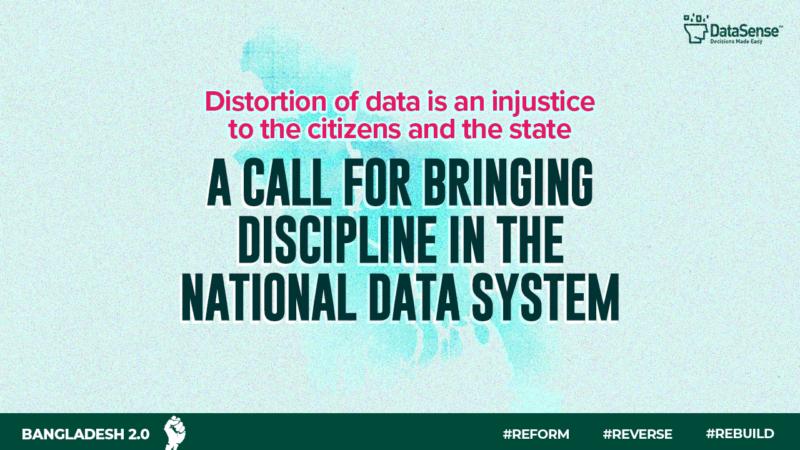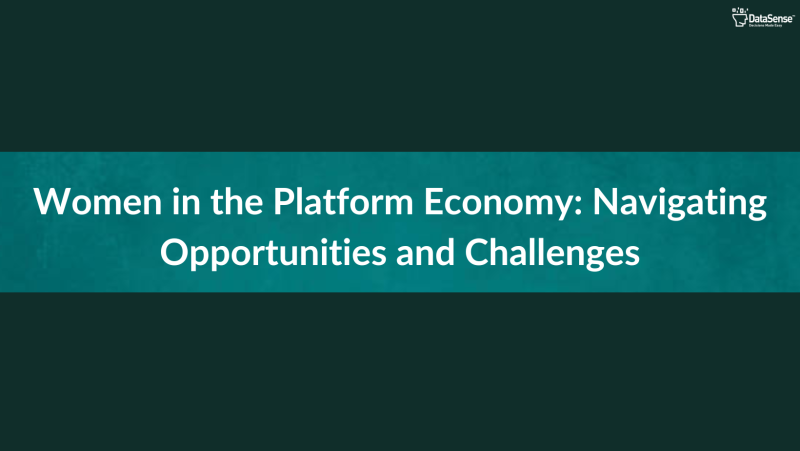Demographic Dividend of Bangladesh: A Policy Analysis of the Young Workforce Management

Author: Shahriar Rabab
With over 30% of the population under the age bracket of 24, Bangladesh is an emerging and fast-growing economy with a relatively young population. However, are we harnessing the full potential of this young workforce effectively?
The demographic dividend has been defined by United Nations Population Fund as “The economic growth potential that can result from shifts in a population’s age structure, mainly when the share of the working-age population (15 to 64) is larger than the non-working-age share of the population (14 and younger, and 65 and older”. A major portion of Bangladesh’s population falls within the working-age bracket (UNFPA, 2017). Due to a relatively young population, the working hands of this country are greater in number compared to the non-working hands.
This implies a huge growth opportunity and development prospects for the country. However, Bangladesh faces challenges in offering its young population adequate training and opportunities for skill development. Even though Bangladesh has the demographic dividend to its advantage, it is failing to utilize this opportunity. This underutilization of such a crucial opportunity calls for a deeper exploration of the underlying factors and implications involved.
The current state of demographic dividend in Bangladesh
Bangladesh is currently riding the high tide in the demographic dividend curve. More than 65% of the population is currently aged between 15 to 64 which is around 106 million of the existing population. The dividend window of Bangladesh opened during the mid-90s owing to the low birth and mortality rate. During the same time, the rate of dependents on the working demographic was also low which triggered the dividend.
A look at the demographic birth, death, and dependent ratio shows that the lifecycle of this dividend would end by 2045. So, in essence, Bangladesh is halfway through in terms of the utilizable advantage provided by the young workforce (Bidisha, 2022).
Impact of Demographic Dividend on Growth
In many instances, the rapid economic growth of a country is often credited to the demographic dividend. The rapid economic growth of Hong Kong, Taiwan, China, and South Korea during the 60s to 90s resonates with the proper utilization of the young working-age population.
Bangladesh has also been somewhat benefitting from the demographic dividend which in part accounts for the high growth rate of the country. But in reality, the dividend utilized by Bangladesh is more like a spillover rather than proper utilization of the young workforce (Farid and Mostari, 2022).
According to Dr. Hossain Zillur Rahman, Chairperson of BRAC, there are two dimensions to understanding the effective utilization of the demographic dividend. They are the rate of conversion of skilled labor through quality education and the absorption rate of this skilled labor into remunerative employment. Unfortunately, Bangladesh is underperforming in both these dimensions (Roy and Kayesh, 2016).
Existing Challenges and Policy Regulations
One of the prime barriers in this respect is the lack of proper youth policy in the country. Bangladesh has a satisfactory GDP growth rate of about 5.3%. However, this indicator alone does not showcase the whole picture. The unemployment rate of the country stands at 4.67% according to BBS. It might appear to be a minor issue considering marginal unemployment and growth go hand in hand (Chowdhury, 2020). What is alarming is that 47% of the total unemployed population of Bangladesh are University graduates. This leads to the conclusion that almost half of the skilled or educated class is failing to find a proper job to make ends meet (Haider, 2019).
In addition to that, near about 87% of the workforce is employed in the informal job sector. Without a proper support structure in place, these workforces are neither receiving job security nor benefits which are an essential part of employment. Every year, there are about 20 Lac new entrants into the workforce. However, there aren’t enough opportunities to incorporate this increasing workforce.
From 2013 to 2017, Bangladesh maintained an average growth rate of around 6.6% year on year. During the same period, the job growth rate was just 0.9%. The disproportionate growth rates indicate a crisis point where the economy is failing to harvest the benefits of a large workforce.
Several factors have been identified as the root cause of this scenario. Poor placement policy, lack of skill-oriented education, and weak skill development initiatives are just a few of them. The government needs to step up its initiatives if it plans to use this dividend to its advantage.
A deeper look at the mentality of the youths also reveals some fundamental flaws. Many graduates from various disciplines are resorting to government service as the primary, and in many cases, only one form of acceptable job. A graduate student of engineering pursuing a government job in the administration or economic sector not only underutilizes his or her potential but is also devoid of the technical sector (Zaman and Sarker, 2021).
This mentality of increased desperation for government jobs crops from the desire for job security and stability, along with various other benefits. The silver lining here is the private sector, though it is much weak and provides very low to almost no stability. As a result, it is failing to attract job seekers. Combined with that, most private organizations demand high skill and well proficiency in its relevant areas which are often absent in prospective candidates. And that brings us back to the top of the cycle, the lack of proper skill development initiatives.
The Need for Policy Reform
To overcome this barrier, widespread skill-generation initiatives should be implemented. Graduate studies can be made more skill-oriented to develop work-related skills in addition to academic excellence.
A complete overhaul of the existing education should start from the primary level. There are already positive changes in the curriculum. But there needs to be more experimentation to make it more conducive to the socio-cultural dimensions of Bangladesh. Graduate and vocational studies can focus on more skill-oriented education that can fill the existing workforce needs. Concurrently, there need to be initiatives for more skill-relevant job creation for the new entrants.
The National Employment Policy of 2022 is another step towards recognizing the need for reform to facilitate the demographic dividend. The policy aims to create 30 Lac new jobs by 2030 and bring unemployment down to the lowest point by 2041. While its implementation remains to be seen, the policy idea is a conversation starter at the regulatory level which will definitely bear positive consequences (Molla and Zaman, 2022).
Furthermore, there is a pressing need for a shift in the mindset of the youth. It should be conveyed that government jobs aren’t the only prized prospects as much of the “disguised unemployment” comes in the form of workers failing to get their desired job. Contributing to relevant sectors would not only mean higher output on the part of the youths but will also ensure proper utilization of the demographic dividend.
The working-age population of Bangladesh is expected to grow year on year for the next 20 years until 2040. It is important to understand that demographic dividend is not an automated process. Without active regulatory reforms and change management, Bangladesh will fail to benefit from the dividend window. The “economic outlier” status that Bangladesh holds may not translate to an “economic miracle” in the long run.
Reference list
Bidisha, S.H. (2022). Demographic dividend: How do we include more youth into Bangladesh’s economy? [online] The Daily Star. Available at: https://www.thedailystar.net/opinion/views/news/demographic-dividend-how-do-we-include-more-youth-bangladeshs-economy-3097221.
Chowdhury, P.S. (2020). Demographic dividend: A roadmap to progress. [online] The Financial Express. Available at: https://thefinancialexpress.com.bd/views/reviews/demographic-dividend-a-roadmap-to-progress-1600268169 [Accessed 8 Aug. 2023].
Farid, S. and Mostari, M. (2022). Population transition and demographic dividend in Bangladesh: extent and policy implication. Journal of Social and Economic Development. doi:https://doi.org/10.1007/s40847-021-00173-x.
Haider, A.A. (2019). ‘Demographic dividend’ could turn into a ‘demographic disaster’. [online] The Daily Star. Available at: https://www.thedailystar.net/lifestyle/perspective/news/demographic-dividend-could-turn-demographic-disaster-1709272 [Accessed 8 Aug. 2023].
Jishad, A.I. (2022). Bangladesh Needs to Utilize its Demographic Dividend. [online] International Policy Digest. Available at: https://intpolicydigest.org/the-platform/bangladesh-needs-to-utilize-its-demographic-dividend/ [Accessed 8 Aug. 2023].
Molla, M.A.-M. and Zaman, M.A. (2022). Demographic dividend: Are we letting it pass us by? [online] The Daily Star. Available at: https://www.thedailystar.net/news/bangladesh/news/demographic-dividend-are-we-letting-it-pass-us-3094231.
Roy, M. and Kayesh, S. (2016). Reaping Demographic Dividend in Bangladesh: Challenges and Prospects. [online] Available at: https://globaljournals.org/GJHSS_Volume16/2-Reaping-Demographic-Dividend.pdf.
Tanjim, N. (2022). Demographic dividend: The clock is ticking. [online] The Business Standard. Available at: https://www.tbsnews.net/features/panorama/demographic-dividend-clock-ticking-467230 [Accessed 8 Aug. 2023].
UNFPA (2017). Demographic dividend. [online] UNFPA Bangladesh. Available at: https://bangladesh.unfpa.org/en/topics/demographic-dividend-1 [Accessed 8 Aug. 2023].
Zaman, K.A.U. and Sarker, T. (2021). Demographic Dividend, Digital Innovation, and Economic Growth: Bangladesh Experience. [online] www.adb.org. Asian Development Bank. Available at: https://www.adb.org/publications/demographic-dividend-digital-innovation-economic-growth-bangladesh [Accessed 8 Aug. 2023].
![]()



